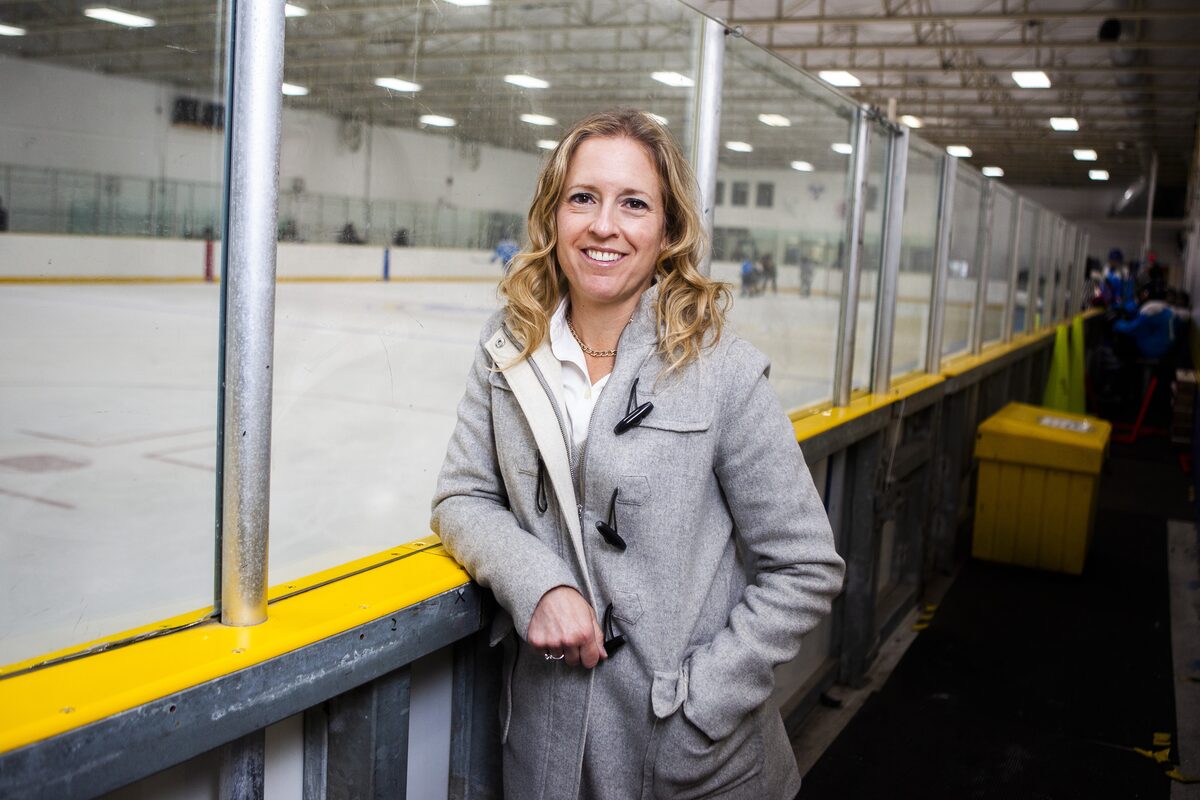When Amy Laski, founder of a tween girls’ hockey league, went looking for ice time earlier this year, it led her to an almost equally difficult task – trying to access data on who uses the city’s rinks, and when.
After many calls to the city, Ms. Laski was able to find out that Toronto does collect information about the number of boys and girls participating in hockey, as well as the number of residents and non-residents. Yet gender data do not factor into how ice is allocated, Ms. Laski says, and when cobbled together, they show only 7 per cent of available ice time is used by girls.
“Let’s figure out a system to make sure that the people who have long-established leagues do get ice time, and a sufficient amount, but that it’s also giving other people a shot,” says Ms. Laski, a Toronto-based entrepreneur.
Data may be the key to helping create such a system, and the hope that they can be is at the heart of a first-of-its-kind project currently under way, run by the Future of Hockey Lab, a Nova Scotia-based organization created in 2021 to help make hockey more accessible and inclusive.
Called “Open Ice,” the project is planned to begin collecting data from rinks across Nova Scotia in January, eventually expanding across the country over the next three years. The data, which will be publicly available, will help make the use of ice time more efficient and equitable, says Amy Walsh, the lab’s co-founder.
“If we’re really going to tackle this inequity issue, we need to see the data first and use that as a leverage for change,” she says.
The idea for the project came from consultations with Leijsa Wilton, Hockey Nova Scotia’s Female Council chair, and Christina Lamey, president of the Cape Breton Blizzard Female Hockey Association, who shared her struggles finding ice time for female players, Ms. Walsh says.
“We dug a little deeper and discovered that there’s definitely some validity to these anecdotes,” Ms. Walsh says. “But there’s very little data available of who’s actually using the ice, and without this data, and insights that come with that data, it was hard to really figure out a solution. That’s when a little bit of a light bulb went off for us and we realized, okay, this is a data issue.”
The lab is currently developing the platform it will use to gather and track the data, and signing partnerships with rinks, Ms. Walsh says.
Beginning in January, the lab hopes to begin collecting data from both municipal and privately operated rinks in Nova Scotia, including gender breakdowns of who uses the ice and a wide range of demographic factors, Ms. Walsh says. Much of the information is typically gathered by municipalities and arenas, she says.
The project will be able to gather it in one central location, make it publicly available, track it and provide a fuller picture of how ice is being used across many arenas. From there, the lab will expand the project across the country over the next three years, Ms. Walsh says.
“We’ll then have levers for improved scheduling, reducing vacancies, increasing access,” she says.
Ice time is typically allocated based on registration numbers from the previous season, says Dean Smith, chair of Hockey Nova Scotia’s diversity and inclusion task force.
The same is true across much of the country. The City of Toronto’s ice-allocation policy states that its method includes “equitable distribution to males, females, persons with disabilities, etc.”
But when it comes to booking ice, the policy favours incumbency. Leagues that had ice time one year tend to have right of first refusal the following year.
That sets up an obvious barrier to new groups hoping to get a share.
“We always need to be looking at policies and how they impact all user groups to ensure the ice is distributed equitably to groups that otherwise have not had the opportunities that they should have,” says Scott Oakman, executive director of the Greater Toronto Hockey League.
Having clear data on who, when, where and why ice is allocated will help lead to fairer distribution in Nova Scotia, Mr. Smith says.
“Female hockey is shut out of primetime ice in the province,” he says. “Once we see the data and are able to visualize that for the province, the province will not tolerate it any more and will take steps to rectify the issue.”
There are not enough rinks to meet demand, and the infrastructure that is available is not apportioned equitably, says Allison Sandmeyer-Graves, chief executive of Canadian Women and Sport, an advocacy organization.
“These challenges are a limiting factor on our collective ability to break down barriers to girls and other underrepresented groups in hockey and other sports that require ice,” she says.
Girls are almost three times more likely than boys to drop out of sports during their teen years, Ms. Sandmeyer-Graves says. “Girls talk to us in our surveys about limited access being one of the greatest barriers they face,” she says. “We need to fix the system that has caused this exclusion from sport.”
After much discussion with the city, Ms. Laski was able to secure ice time for her league starting in January. But that doesn’t change the structural barriers faced by historically underrepresented groups, she says.
That is why she hopes the Open Ice project brings about change not only in Nova Scotia but across Canada.
“I’m very much in support of the adage ‘If you don’t measure it, you can’t manage it,’ ” she says.
DAVE MCGINN
The Globe and Mail, November 26, 2023

